This July, I got selected to test knit a jacket/cardigan by Lydia Morrow, a very cool knitwear designer.
Color choice
You’re actually supposed to have 5 colors for this pattern. Any ones you choose, but still more than I ended up using.
After receiving a letter that confirmed my participation in the test knit, I spent a day on Pinterest trying to figure out the color palette. I’m terrible with those.
I was also looking at the online yarn collection of a yarn store here in Porto.
And then – I don’t remember which image triggered the thought train, but I do remember the yarn. It clicked! Fewer colors, but with a glow-in-the-dark yarn!
I even thought of selecting colorwork patterns that would be cyberpunkesque, but decided it would be too on the nose.
So I selected the pattern for each colorwork section and got to it. All but one I’ve found on Pinerest.
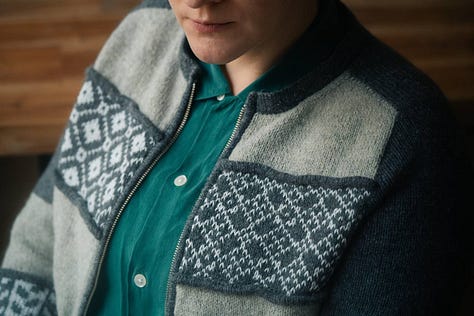
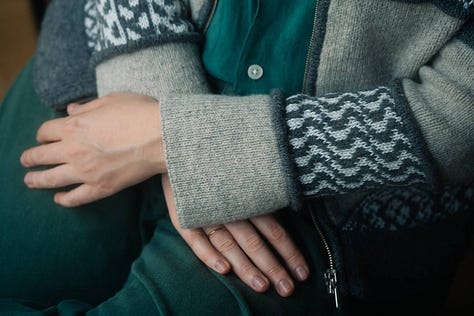

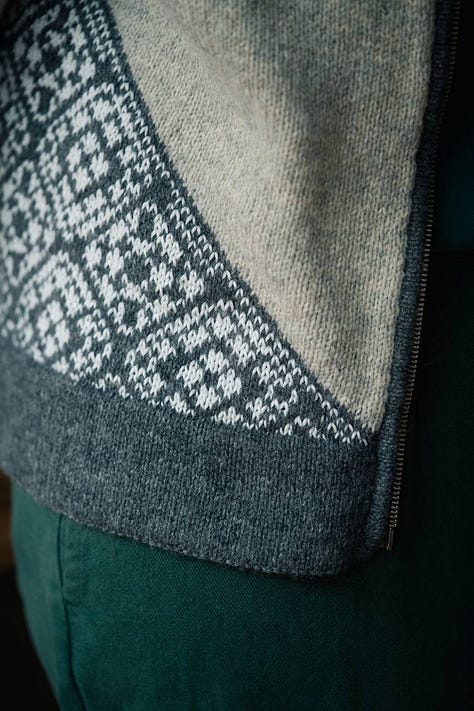
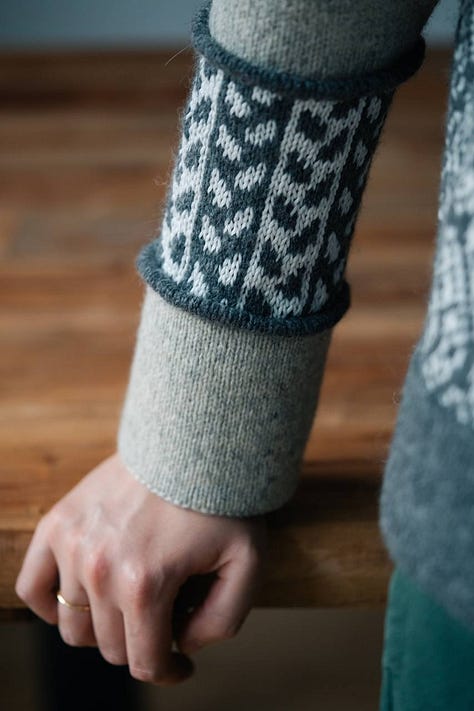
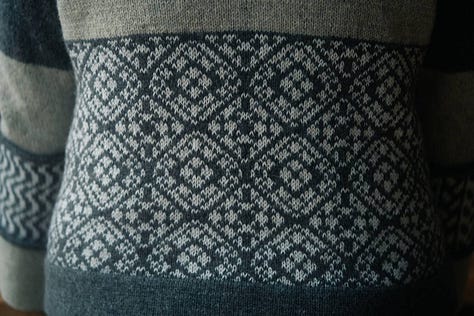
Figuring out a stitch pattern
For the biggest colorwork section (the last picture in the gallery), I needed a very specific pattern. If you start looking at colorwork patterns, you’ll notice that a lot of them are symmetrical. But none of the ones I’ve found was symmetrical the way I needed it:
These symmetrical patterns with an even number of stitches are usually created for knitting in the round. Because of this, the repeat is (almost) always offset by one stitch and are only truly symmetrical if you remove the middle stitch of the repeat.
This hat pattern is a good example: there’s a middle stitch, and all other stitches are symmetrical around it.
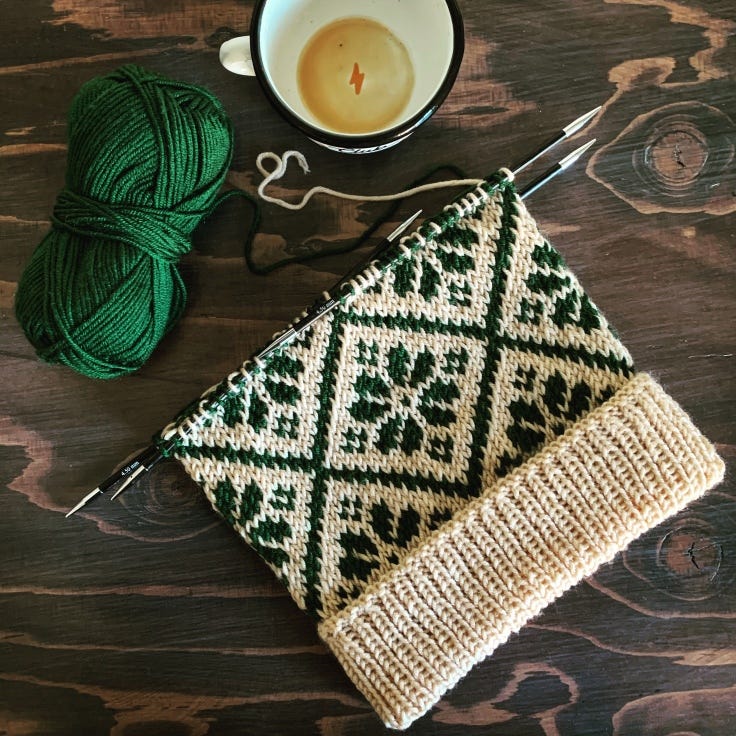
It would work for me if I had an odd number of stitches to work with. But I didn’t. And I needed a pattern that would
a) Have an even number of stitches
b) Be completely symmetrical if folded in half
I couldn’t find one, so I improvised. I’m slowly working through the fully colorworked Troi Sweater, and I really enjoy the pattern. So I reworked it a bit and came up with the following.
24 stitches wide, 24 rows tall, fully symmetrical an all sides.
Why did I need a fully symmetrical pattern? I had an even number os stitches for the jacket. As you can see in the picture, this colorwork section widens gradually till it takes the whole circumference of the jacket. And it happens on both sides of the closure.
I could, of course, move it by one stitch. Or add an extra stitch so that the total stitch number is odd, or do something else.
But I decided to adjust a stitch pattern to work with what I have in the garment, and not adjust the garment to fit a stitch pattern.
This also means I have a fully original stitch pattern here! You’re welcome to use it of course.
Powering through a stitch pattern
But that wasn’t the only stitch pattern I got a bit of trouble into with.
Another one was the pattern I used for the upper back. I copied it to my notebook as I always do. But then, when starting the knitting, I decided to invert colors.
Also, I’ve always knitted colorwork in the round before this project, and for me multiple color management when knitting back and forth is awkward at best.
Also, this pattern that I chose wasn’t symmetrical at all.
So while knitting I had to do all of these at the same time:
Invert the colors in my head (I could have redrawn it in my notebook with the correct colors, but who does that)
Manage colors when knitting on the wrong side
Flip the rows in my head when knitting on the wrong side.
I really love the result! It’s the colorwork section on the upper back in the picture below. But I think it will be a long time before I do these three at the same time again.
And now the fun part
Do you remember I mentioned it glows in the dark?
Well it does!
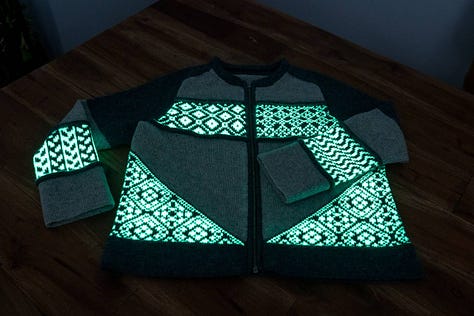
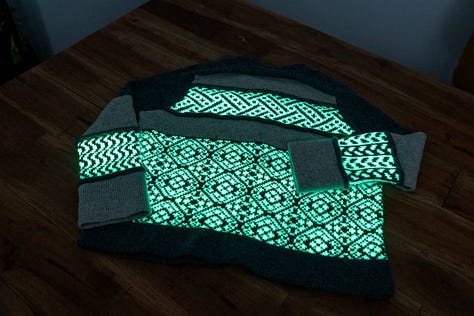
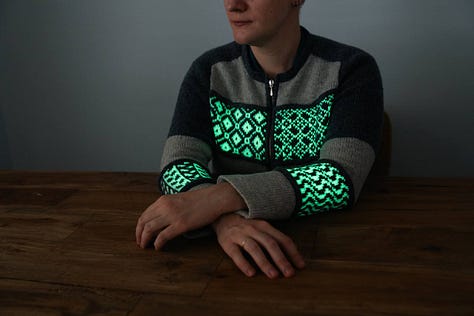
Photos (as always) are by my wife.







